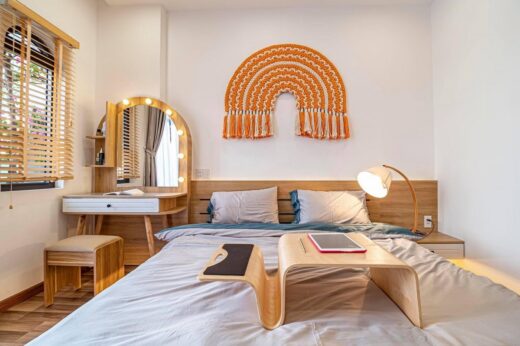Psychology of color guide, How do they improve concentration in e-learning, Online property style coloring advice
Psychology of Color: How Do They Improve Concentration
post updated 11 May 2025
Color psychology is a term applied to studies which determine how certain colors impact behavior in humans. It involves the mixing and matching of different hues to explore the effect of these combinations on behavior, mood and impression on others.
Color is vital to the human experience, because through color we communicate, we feel and we heal. Despite lack of general research in the field, color psychology has become a hot topic in marketing and other areas. An advertiser uses it to sell products, while those in school and online students use it to increase their productivity.
This post will look at ways in which the use of colors can be incorporated to improve concentration by taking into consideration the psychological as well as the physiological aspects. After all, color can affect our mood, desires and reactions, and it will be a shame if this powerful tool is not used effectively.
13 June 2022
Psychology of Color – Concentration Improvement
Color psychology for effective concentration in e-learning.
Studies have shown that an internet user processes as much as 80% of information required for e-learning through visual content. If you are studying your online master’s degree, you can apply this technique appropriately to your advantage in order to enhance knowledge acquisition.
Colors are powerful visual tools and psychological triggers that evoke emotions and change perceptions to help online students to learn better. That said, excessive use of colors can lead to cognitive imbalance and prove to be counter-productive, if a student is not familiarised with colour psychology in advance before designing.
To find the right balance, when it comes to creating e-learning courses, students should first make sure what it takes to make a good color choice.
Once you have the basics of color theory under your belt, one can approach the psychology of individual colors with a bit more nuance.
- Use color to direct attention. Warm colors, particularly red, can achieve this goal best.
- By contrasting colors in the text background (except white, black or grey) reading ability can be improved by 40%.
- As colors are linked with neural pathways, students remember them better than visual cues. The right colors can improve learning by about 55% and concentration by 73%.
- Low wavelength colors, particularly green, are excellent for improving concentration. Not only is it easy on the eye, it is a sign of a green space which could provide the moment of revitalization needed to concentrate better.
Other colors which improve concentration
Whether it is the office or the study room, the choice of color theme can make all the difference when it comes to concentration and improving productivity. Here are two other hues you should think about:
- Blue: Blue promotes a relaxing atmosphere as it lowers blood pressure and slows down the heart rate. It encourages study and work in a better frame of mind. While darker shades help in thoughts of brain process, lighter blues help improve concentration.
Orange: Orange denotes energy, but one has to use the right hue to get the best results. A lighter shade will promote focus and concentration and make the area of study look neat and organized.
Comments on this guide to Psychology of color: how they improve concentration article are welcome.
Interior Design
Interior Design Posts
How to combine colors for interior design

6 common interior design mistakes to avoid
Top ways to bring color into an all-white kitchen
Psychology
Architecture and its effect on human behavior and psychology
Innovative playground designs for active play
The psychology behind casino design
Residential Property Articles
Home Improvement
Home Improvement Posts
Ultimate checklist for renovating your home
Choosing a cohesive design style for your home
How to Spruce Up Your Home with Personalized Prints
Comments / photos for the Psychology of color: how they improve concentration advice page welcome.






